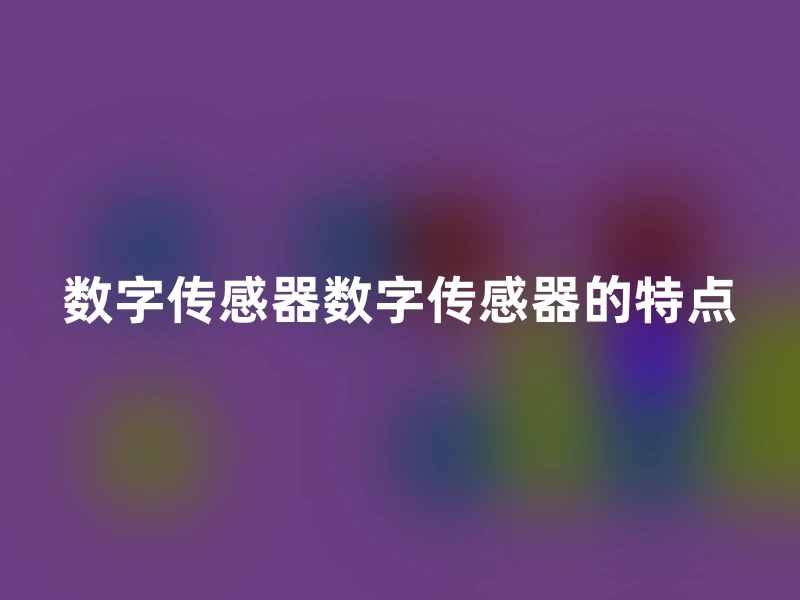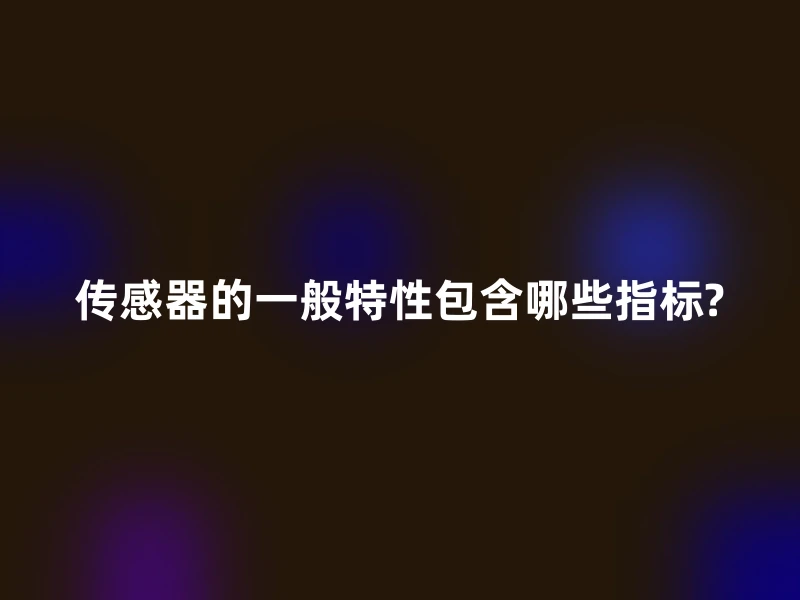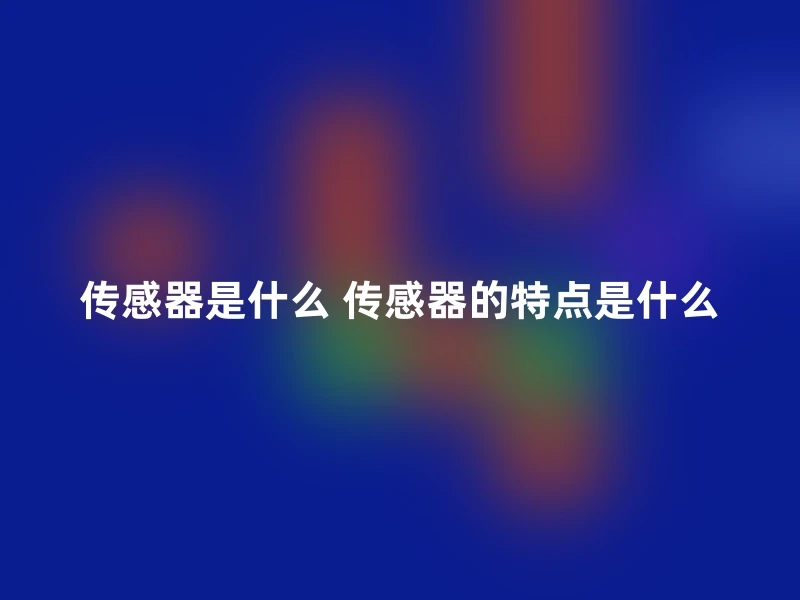Categorization:Product Information

The digital sensor demonstrates excellent performance with its unique technical features. First of all, it adopts advanced A/D conversion technology with intelligent filtering algorithm, which ensures the stability of the output code even under full scale conditions, ensuring the accuracy of the data. Data storage is another key feature, the digital sensor has a reliable data storage technology, which can guarantee the lasting preservation of the module parameters, prevent the loss of parameters, and enhance the stability of its long-term use. Electromagnetic compatibility is an important indicator of digital sensors, it has good anti-interference ability, reducing the interference of the external environment on the signal, so that the signal transmission is more long-distance, thus improving the stability and reliability of the sensor. Digital error compensation technology and the use of highly integrated electronic components, so that the sensor's linearity, zero point, rated output temperature drift and creep and other performance parameters can be comprehensively compensated through the software, eliminating the impact of human factors, significantly improving the overall accuracy and durability of the sensor. The output consistency of the digital sensors is as low as 0.02% or even better, and all the characteristic parameters are highly consistent, which makes them highly interchangeable and easy to replace in various scenarios. By integrating A/D conversion circuits, digital signal transmission and digital filtering technology, digital sensors are significantly more resistant to interference, not only transmitting signals over longer distances, but also improving their stability in complex environments.

The digital load cell is a new electronic weighing technology that integrates the traditional strain force load cell with the contemporary electronic information technology and computer technology, and adopts the highly integrated and intelligent system control components inside the inductor to carry out the simulated analog net weight signal and the preparatory processing such as simulated analog/data conversion, and fully automate the zero point, temperature, discrete system, hysteresis effect, stress relaxation and other intelligent compensations for the strain force load cell and finally outputs the data signals, Intelligent compensation of zero point, temperature, discrete system, hysteresis effect, stress relaxation, etc. is carried out, and the final data signal is output. The main features of intelligent load cell: (1) In software, it adopts pre-determined data model and optimization algorithm to carry out four-corner deviation adjustment, zero point compensation, linear adjustment and other characteristic compensation for the inductor automatically, which solves the problems of wheel weight, temperature hazard and stress relaxation of practical activities, completely solves the hazards of temperature drift and time drift, and reduces the systematic deviation of the scale, and further improves the reliability and stability of the scale. reliability and stability. (2) Because of the unique digital circuit design and communication method adopted in the hardware and software technology, the weighing signal is transmitted over long distances and the output signal is highly anti-interference. (3) Can avoid fraud with simple circuitry to change the size of the weighing signal method. (4) Improved maintenance characteristics and interchangeability of electronic device scales, especially when a common failure occurs in one of the sensors in electronic device scales that use digital sensor system software, the scales can be accurately identified and removed and replaced immediately, or the digital sensor system software can be re-set as necessary to ensure the scales' professional capability.

The characteristics of the sensor include: miniaturization, digitalization, intelligence, multifunctionality, systematization and networking. It is the primary link to realize automatic detection and automatic control. The existence and development of sensors allow objects to have senses such as touch, taste and smell, which slowly bring objects to life. They are usually divided into ten major categories according to their basic sensing functions such as heat-sensitive elements, light-sensitive elements, gas-sensitive elements, force-sensitive elements, magnetic-sensitive elements, moisture-sensitive elements, acoustic-sensitive elements, radiation-sensitive elements, color-sensitive elements and taste-sensitive elements. Sensors are generally composed of sensitive components, conversion components, conversion circuits and auxiliary power supply is composed of four parts of the sensitive components directly feel the measurement, and output and the measurement of a definite relationship between the physical amount of the signal; conversion components will be sensitive to the output of the physical amount of the signal converted to electrical signals; conversion circuits are responsible for converting the output of the electrical signals of the conversion components to amplify the modulation; conversion components and conversion circuits are generally also required to power the auxiliary power supply.

The general characteristics of the sensor contains the following indicators: sensitivity, response characteristics, linear range, stability, repeatability, drift, accuracy, resolution (force), hysteresis. Sensor (English name: transducer/sensor) is able to feel the measured information, and can feel the information, according to certain laws, transformed into electrical signals or other required forms of information output to meet the transmission of information, processing, storage, display, recording and control of the requirements of the detection device. The existence and development of sensors, so that the object has a sense of touch, taste and smell and other senses, so that the object becomes alive, the sensor is the extension of the five human senses. Sensors have the characteristics of miniaturization, digitalization, intelligence, multifunctionality, systematization, networking, etc. It is the primary link to realize automatic detection and automatic control. The main role of people in order to obtain information from the outside world, must rely on the sense organs. People rely solely on their own sense organs, in the study of natural phenomena and laws and production activities in their function is far from enough. In order to adapt to this situation, there is a need for sensors. Therefore, it can be said that the sensor is the extension of the five human senses, also known as the five electrical senses. With the advent of the new technological revolution, the world has begun to enter the information age. In the process of utilizing information, the first thing to be solved is to obtain accurate and reliable information, and sensors are the main ways and means to obtain information in the field of nature and production.

1, the sensor (English name: transducer/sensor) is a detection device, can feel the measured information, and can feel the information, according to certain laws, transformed into electrical signals or other required forms of information output, in order to meet the information transmission, processing, storage, display, recording and control requirements. 2, the characteristics of the sensor include: miniaturization, digitalization, intelligence, multifunctionality, systematization, networking. It is the primary link to realize automatic detection and automatic control. The existence and development of sensors allow objects to have senses such as touch, taste and smell, so that objects slowly become alive. They are usually divided into ten major categories according to their basic sensing functions such as heat-sensitive elements, light-sensitive elements, gas-sensitive elements, force-sensitive elements, magnetic-sensitive elements, moisture-sensitive elements, acoustic-sensitive elements, radiation-sensitive elements, color-sensitive elements and taste-sensitive elements.